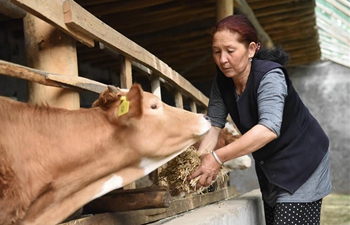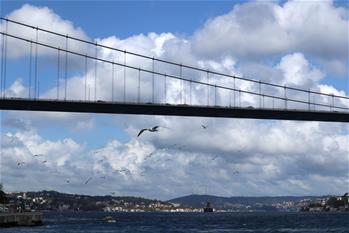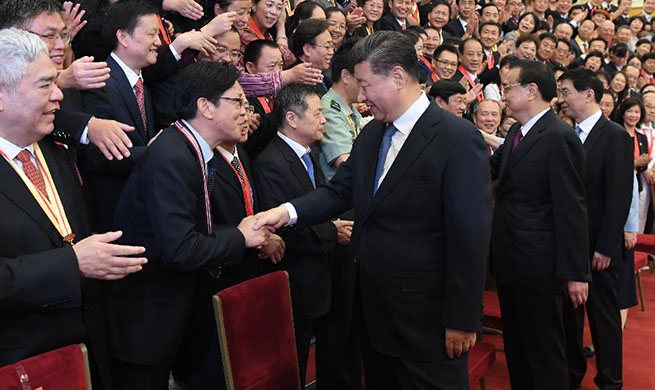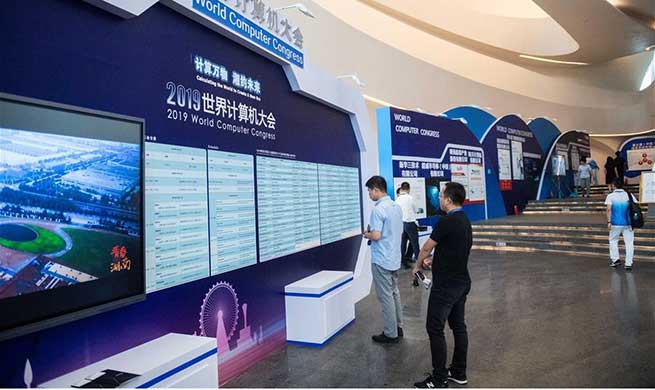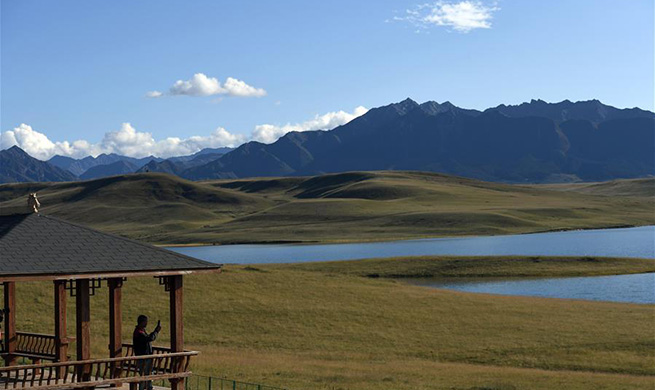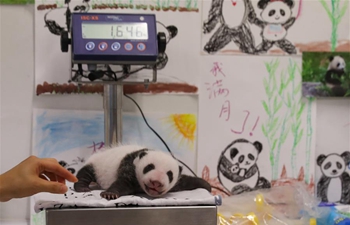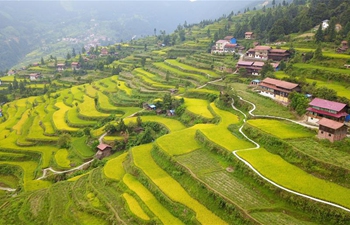TOKYO, Sept. 11 (Xinhua) -- Tokyo Electric Power Company Holdings Inc. (TEPCO) said Wednesday that more than 420,000 households near Tokyo are still without electricity, after the metropolitan area was battered by a powerful typhoon days earlier.
The utility said that as of 4 p.m. local time, more than 420,000 households and businesses were without power in Chiba Prefecture, and 3,800 still experiencing a blackout in neighboring Kanagawa Prefecture.
TEPCO had said it planned to reduce the number of households without electricity to 120,000 by Wednesday morning, but restoration work has been hampered by powerful thunderstorms and grey skies demising workers' vision.
In Chiba, Tokyo and Shizuoka prefectures, as the mercury soared well above 30 degrees Celsius and conditions remained extremely humid, 24,900 households were still without running water as of 3:00 p.m. local time on Wednesday, the health ministry said.
The adverse conditions may have resulted in the deaths of two people, local media reported, as a 93-year-old woman and a 65-year-old man died of suspected heatstroke in their homes that were without power on Tuesday, when the mercury in Chiba topped 35 degrees Celsius.
The health ministry also said that as many as 62 hospitals in the affected areas may be suffering from power outages, with the ministry only able to confirm that 37 of them are able to provide treatment for patients.
Officials, meanwhile, are trying to determine if a male patient died in one of the hospitals in Chiba due to the blackout knocking out medical devices such as respirators and dialysis machines.
A number of pigs have also died on farms as Typhoon Faxai knocked out power supplies to electric fans at pigpens and power needed for automatic feeding machines.
The problem has been made worse by the intense heat and humidity, with one veterinarian quoted as saying the situation was reminiscent of that after the 2011 earthquake and tsunami disaster, with concerns of an epidemic now rife.
Faxai, the season's 15th typhoon and the ninth to make landfall in Chiba since record keeping began, dumped more than 440 millimeters of rainfall on the city of Izu in Shizuoka Prefecture, with 109.0 mm of rainfall logged in a single hour early in the morning, the weather agency said in the hours after the typhoon touched down.
It wreaked havoc on the Tokyo metropolitan area after making landfall east of Tokyo at around 5 a.m. on Monday, killing at least three people and causing major disruption to transportation networks with train services being suspended and flights being halted as the capital and surrounding areas were lashed by torrential rain and battered by gusty winds.
Around 930,000 households in the prefectures of Chiba and Kanagawa were temporarily left without power, according to TEPCO at the time, while the Japan Atomic Energy Agency said a disused cooling tower at a facility in Ibaraki Prefecture collapsed in the morning, although no radioactive materials were dispersed.
In addition, Japan's nuclear watchdog said that seven monitoring posts in Chiba Prefecture had not sent data regarding radiation levels, with the malfunction occurring since early Monday morning.
The Nuclear Regulation Authority confirmed, however, that alternative monitoring posts had not detected any change in the levels of radiation.


